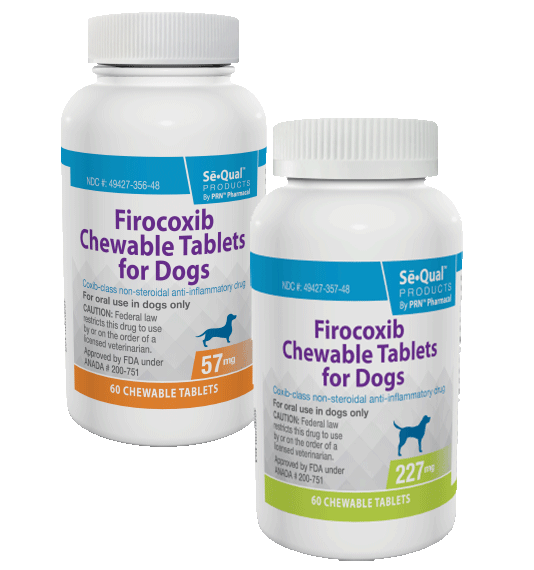 Web Content Viewer
Web Content Viewer
Run, Jump, and Grow Old Together
Published on 10/26/23

Our clients want their pets to live forever, but more so, they want them to be happy and comfortable in the time they are privileged enough to enjoy one another.
Every single day in veterinary clinics, a senior pet is examined, and their story is told.
One memorable summer day, a long time ago, a special senior poodle patient named Chloe who had weathered some of the most difficult storms with her owner, including the loss of her husband, came in for a check-up. We sat and talked, and I examined Chloe and with much emotion, we talked about wanting what is best for her but not wanting her quality of life to decline.
My client did not want to think of life without her! With medicine evolving in amazing ways, we see more of these older animals live longer. We hear it over and over: “They are not just a dog. They are my reason to get up in the morning, to go on a walk. They are the one who listens to my jokes and my secrets!” So, it’s quite stressful on an owner’s mind and heart when they start to see the changes in their pet’s activity, energy, and playfulness.
This begs the question we all ask ourselves when managing these types of cases: where do we begin to help preserve the quality of life for the senior dog that develops chronic pain and the lifestyle changes that follow?
COMMUNICATION
The first step is COMMUNICATION! It cannot be stressed enough that listening to our client’s “story”, and hearing their concerns and expectations, is incredibly important to developing a pain management plan.
By listening to our clients, we can provide reassurance that their concerns and their dog’s issues are understood and heard. If the time is taken to educate clients on the cause of their pets’ change in activity and cause of chronic pain as well as the expectations of different treatment options; this can help reduce frustrations and build trust while navigating a plan or change of plans.
Recheck appointments and phone consultations should be encouraged to keep that line of conversation open and ensure that the treatment is working as envisioned for their dog. Communication isn’t just important, but utmost transparency in your communication is vital so that clients are not misled in their plan of action toward the pet’s overall health.
Educate the owners about the symptoms that are subtle but can give important insight into the signs of chronic pain with aging. As dogs reach roughly 7 years of age depending on size and breed, they can be considered mature or senior pets.
On their visits to the veterinary clinic, owners can fill out questionnaires on symptoms of aging and arthritis during a wellness visit or simply talk to their veterinarian and technician to assess and educate them on the small changes that can indicate chronic pain.
Does your dog…
- Have a limp?
- Have trouble posturing to urinate or defecate?
- Have trouble standing after sleeping?
- Have trouble going up or down stairs?
- Have a loss of muscle mass on limbs and spine?
- Have lethargy or a decrease in playfulness?
- Yelp in pain when picked up or groomed?
These symptoms can be ranked as mild to severe and any or all can be signs of chronic pain that may indicate arthritis, dysplasia of hips and elbows or joint and ligament injuries from the past, or that are new.
There are many other types of chronic pain in senior dogs that can’t be ignored, such as dental disease, gastrointestinal disease, chronic kidney disease, bladder infections, and cancer. However, arthritis and joint pain comprise the majority of the concerns and complaints from senior dog owners.
TREATMENT
How do we choose the right treatment plan for these senior dogs to get the skip back in their step? There is not just one answer to this question.
Consider the following when preparing a management protocol:
- Are there any underlying problems? (Consider bloodwork, urinalysis, and radiographs to assess health)
- Is the owner comfortable giving daily medication?
- Are there cost restrictions that keep the owner from certain medications or treatments?
Certainly, some of the most commonly used treatments are the medications in the NSAID (non-steroidal anti-inflammatory) family for arthritis and chronic pain. This class of drugs includes firocoxib, carprofen, grapiprant, and more. There are several that have generics that can make treating more affordable.
Choosing which NSAID may depend on the health and tolerance the dog has for the prostaglandin pathway that is inhibited, the frequency of dosing, the availability of generics, and the cost.
These medications can be standalone treatments or used in conjunction with other medications and alternative therapies to have a multimodal approach. Combination therapies can target different stressors on the arthritic joints and more effectively control pain.
Alternative therapies to discuss with your clients may include:
- Weight loss to reduce strain on joints
- Joint supplements that include glucosamine and chondroitin
- Anti-inflammatory supplements such as Duralactin that naturally reduce inflammation in joints
- Omega-3 fatty acid has shown to have anti-inflammatory properties
- Medications that can be combined with NSAIDs (gabapentin and opioids)
- Intra-articular joint injections
- Mild exercise to keep joints moving and orthopedic bedding
- Acupuncture, chiropractic medicine, laser therapies
- Prescription diets that target joint disease
Targeting the pain pathway with NSAID pain medication alongside other treatment options can yield improvement and an outcome that improves the life of the pet and the owner.
Arthritis in senior dogs cannot be cured, but with a combination of treatment options, our loyal four-legged family members can live a long life filled with quality and spirit. Chronic pain in our older pets does not have to be the “norm.” It must be recognized and treated according to baseline health and the activity level of the pet.
The goal of treatment is not to grant immortality to our pets, but perhaps just a few more moments to share and dwell in the bliss of having our most trusted companions.
As for Chloe, she gave her owner three more happy, adventurous, and quality years. She was managed with NSAIDs, a joint diet, and anti-inflammatory joint supplements. Her pace was a little slower, her walks were a little shorter and she learned to use a ramp instead of stairs. Her loyal owner accepted Chloe’s new pace with gratitude. She had a happy and energetic companion to listen to her stories and share her days. And that is what brings joy into the lives of pets, clients, and veterinarians!

Ellie lived to age 17, a senior family member of Melissa A Gourley, DVM.
The human-animal bond is why Dr. Melissa Gourley became a veterinarian. The fulfillment of helping clients and pets is what motivates her every day. She has found that success thrives on good communication. She enjoys mentoring veterinary and high school students and being a positive part of their journey.
She has been a veterinarian for 27 years in a small town in southern Missouri after graduating from the University of Missouri College of Veterinary Medicine in 1996 and the Supervisor of the Bacteriology Lab in the Veterinary Diagnostic Lab for three years before that. Her husband is also a veterinarian and because he was 3 years ahead in school, he jokes that he had to go through veterinary school twice! Together, they owned their veterinary practice for 27 years while raising 3 children who called the clinic their home and building a registered red Angus cattle farm. They have been blessed with many pets that have lived well into their golden years.

Firocoxib for Dogs
Firocoxib for Dogs by PRN helps to control pain and inflammation associated with osteoarthritis in dogs, as well as the control of post-operative pain and inflammation associated with soft tissue and orthopedic surgery.
Bioequivalent to Previcox.